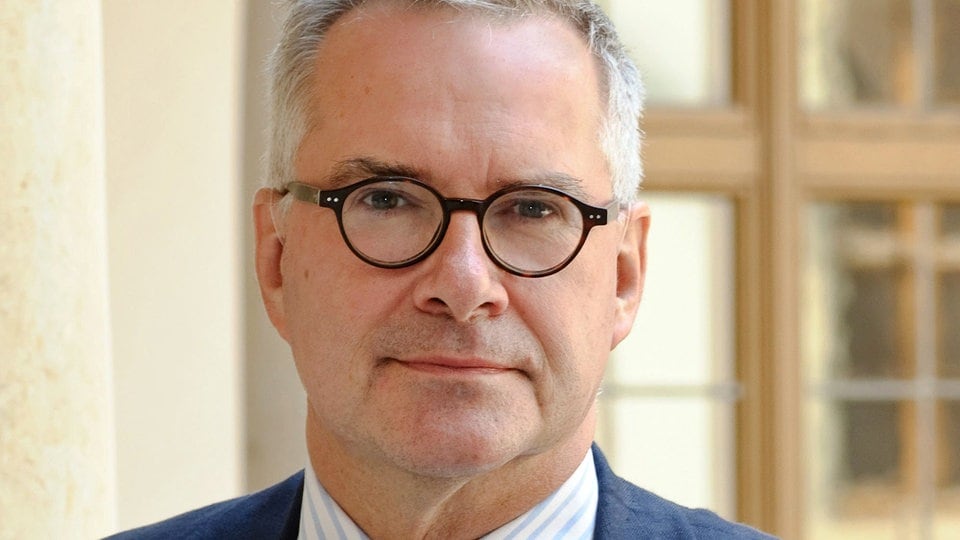MDR KULTUR: When you came to Dresden in 1993, the reconstruction of the castle was already a done deal. The conception was still being wrestled with, including the money. The armory was still in the east gallery of the Alte Meister gallery and the green vault had an appearance in the Albertinum. For a 37-year-old, joining was a great job and certainly a challenge. Was it already clear to you then that this would be your professional life’s work, so to speak?
–
Dirk Syndram: No, but that it is a great stroke of luck. I was very happy to come to the Green Vault, and for a young art historian I was then, the Green Vault was a revelation from a distance, because it really is a treasury museum. When I became director of the Grünes Gewölbe, I had already thought: ‘Nothing better can happen to you’ – and that was true.
–
Were you surprised by the size of the population? Many of the works were still in the depot and in need of restoration. An overwhelming legacy – did you realize that before?
–
I didn’t realize that. Of course, I saw the very beautiful exhibition in the Albertinum that Menzhausen had created, which also tried to make the historical green vault, i.e. the baroque treasury of Augustus the Strong, vivid with wall parts and to put the whole thing in a context. In 1993 I still had my office in the Albertinum, and there was also a depot there. You will not believe how many small, beautiful pieces can be brought together in a small depot. And it took me a long time to find out what we had. Nowadays all of the really important objects are on display, only a small part is still in the depot. At that time the depot was much larger.
–
The task for the first seven or eight years was not only to continue the museum in the Albertinum, but also to get to know the individual pieces. And I had the idea very early on to present the Green Vault in two parts: On the one hand, in the Historical Green Vault, which should come as close as possible to what August the Strong created between 1723 and 1729. And then another museum, today’s New Green Vault, in which the individual objects are then exhibited in such a way that they can be optimally presented. What I had in mind was a presentation of the objects that have turned handicrafts into treasure art. In the course of my research, I noticed that what we have there wasn’t just made by a well-meaning artisan, but something by Dinglinger that quickly cost as much as a whole house in Dresden.
–
Let’s stay with the term treasure art, which you use for very different things: for nautilus cups and for complicated little automatons – what is the point of this term?
–
Treasure art is already a luxury item, a collection item. Let’s stay with the nautilus shells: They came from far away, from Indonesia. You fly there today and possibly back again the next day. But at that time you had to go there by ship for weeks and months to even get something like that as a commodity. They have just come out on the market, have been decorated and look like cups that you can drink from. But nobody drank from it, they were simply objects to be collected, much like paintings by Andy Warhol or Beuys are today. Something you’ve just put in your treasure trove. And these treasuries were widespread. It actually belonged to the good reputation of every prince.
–
As always, August the Strong exaggerated, he already had the largest treasury back then and, thank God, it was kept. Treasure art is actually something totally useless, like the golden coffee stuff that you shouldn’t drink coffee from because you burn your fingers or the enamel then breaks. This is just a collector’s item. That is something that the bourgeois mind, which always wants to have a use, is opposed to. (…) In addition to the treasure art, there is also goldsmithing, silver and goldsmithing, which was also used at tables back then and which were then presented in the Green Vault. But the treasure art just pretends to be able to use it and that leads to fascination.
–
How do you transfer your fascination for treasure art to visitors who are becoming more and more diverse and perhaps no longer have Saxon history in the back of their minds?
–
In the castle, we try the immediacy of the object: on the one hand with anti-reflective glass, so as not to reveal the limits so much, so to speak, but rather to give the feeling that you can really feel the object at least with your eyes. Where is there a museum like the Green Vault from the 18th century that you can walk through and then stand directly in front of the art treasures without glass walls or anything in between. Or go to some other museum through a Turkish tent that is 20 meters long and just around the corner you are on the tournament ground and the horses gallop towards you. So this immediacy is something that we use to create new tension over and over again. It was very important to me to create a house that is not boring, that always allows new perspectives.
–
Birgit Fritz conducted the interview for MDR KULTUR.
–
– .


